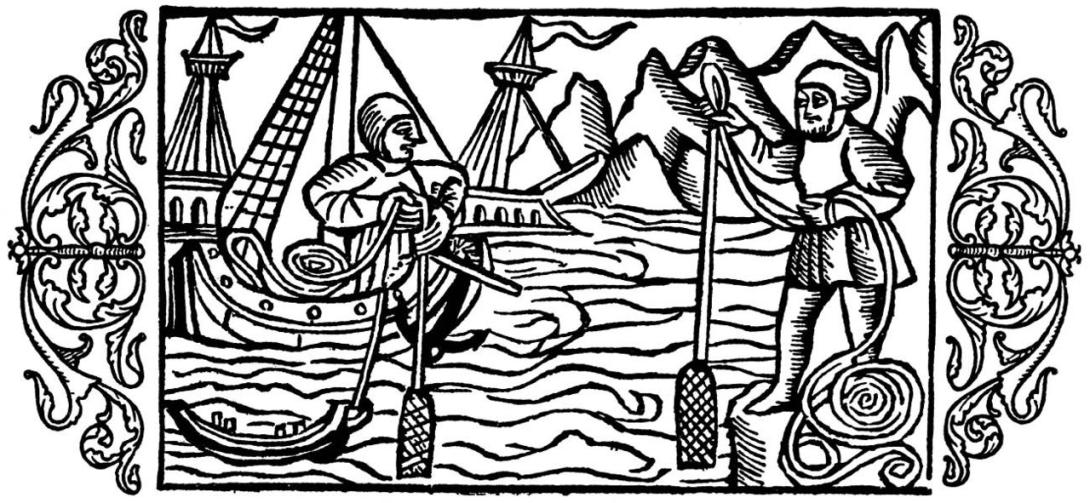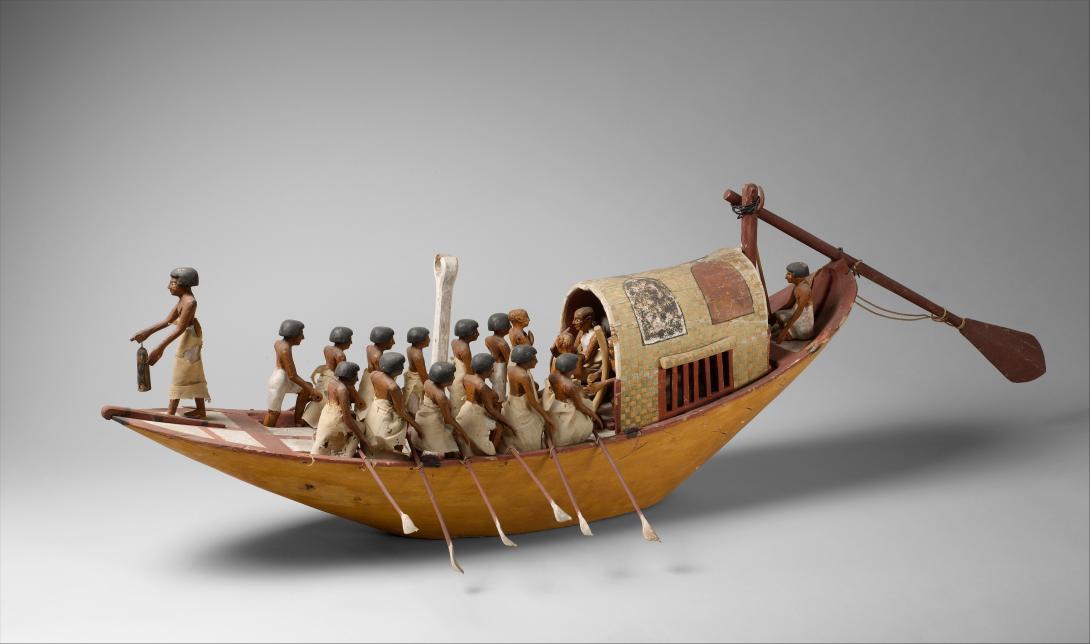
What Lies Under - The Ship's Lead
The Ship's Heaving Lead and Line
Almost as important as knowing where you are, in a seagoing vessel, is what lies below. The lead line is a very old invention, used to determine the depth of the water around a ship. The heavy piece of lead carries the line to the bottom enabling the sailor to read the depth by observing the marks on the line.However, depth of water is one thing, but what about the bottom itself, where the anchor must get a grip? To get a sample of the seabed, the concave end of the lead is packed with sticky tallow. This allows the leadsman to get evidence of the composition of the seabed after retrieving the line. This information is useful in determining the best place to anchor safely.

A sailor and a man on shore, both sounding the depth with a line. Published 1555, by Olaus Magnus (1490-1557)
Credit: Public Domain

An ancient technology: the figure at the front of this Egyptian boat model, ca. 1981-1975 B.C., may be holding a lead line to measure water depth.
Credit: The Metropolitan Museum of Art

Ship Sounding Leads
Credit: WA Museum